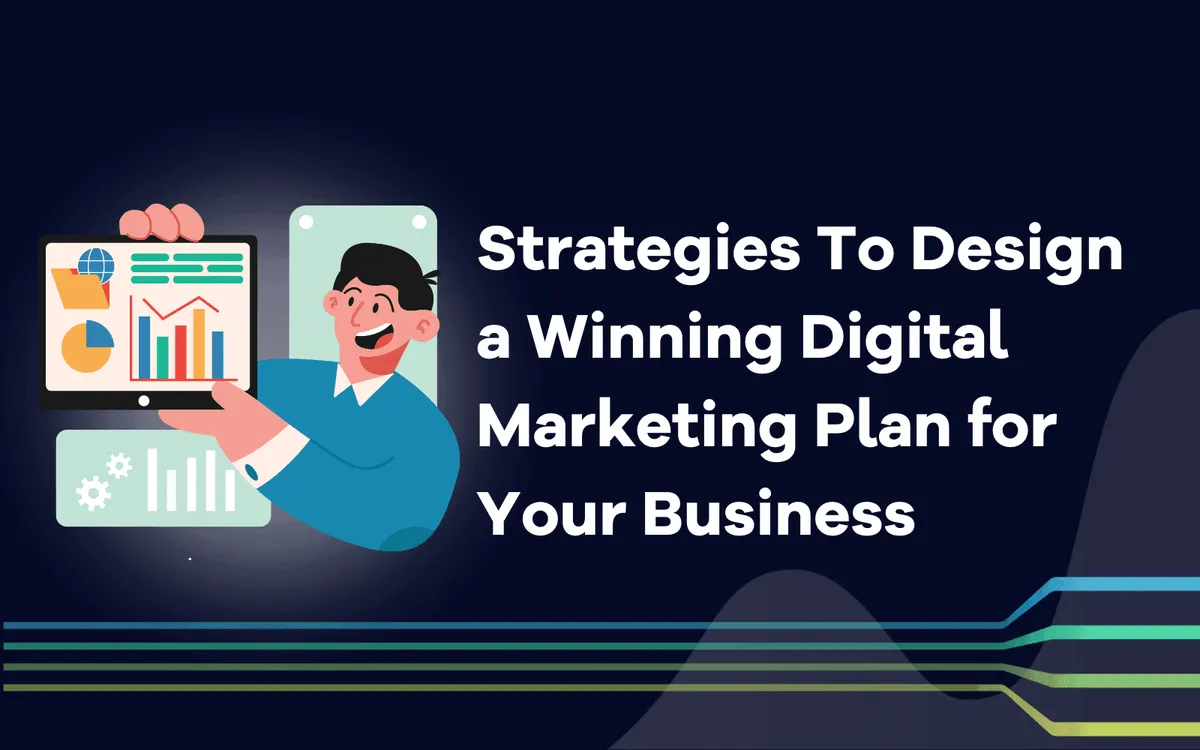
Strategies To Design a Winning Digital Marketing Plan for Your Business

Juned Ghanchi
November 16, 2023
Discover effective strategies to create a winning digital marketing plan for your business. Learn key insights and tactics to boost online presence, engage your audience, and drive success in the competitive digital landscape.
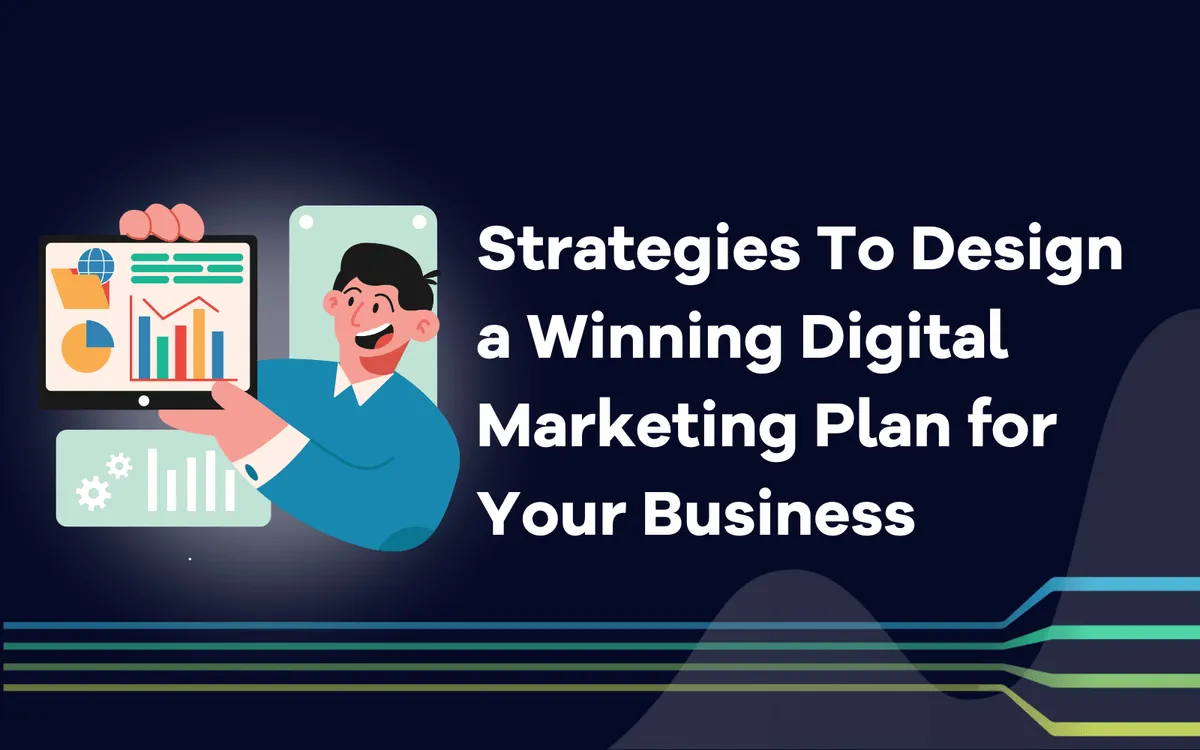
As people spend more time online, digital marketing is booming across industries. Why?
Digital marketing is flexible, cost-effective, and more relevant to an increasingly internet-reliant audience. It can:
Target a global audience
Appeal to individual preferences
Leverage diverse marketing channels
Accommodate startups and big names alike
Drive data-driven decision-making
However, digital marketing involves several moving pieces requiring strategic execution. So, a well-mapped plan is essential to translate your digital campaigns into profits.
In today’s article, we bring you the best digital marketing strategies to win new customers and drive long-term business growth.
Strategies to design a winning digital marketing plan for your business
Here’s what you need to do to devise an effective digital marketing plan:
#1. Understand your business and target audience
The market is competitive across industries. To stand out, you need to know your business inside out.
First, develop a unique value proposition for your brand that communicates the benefits and solutions you deliver. It must state what differentiates you from the alternatives for effective product positioning and attracting high-value leads.

Source: Social Impact Architects
Research your competitors to see what similar products or services are already available in the market. This lets you adapt your positioning and highlight your USPs.
Digital marketing is an excellent tool to target specific customer needs. To leverage this, analyze customer data and look into demographics like:
Age
Gender
Location
Income
Lifestyle
Values
Interests and hobbies
Purchasing patterns
Create detailed customer personas based on your research. These will offer insights into specific customer challenges and how you can craft your campaigns around relevant solutions.
In short, a clear understanding of UVP and buyer personas keeps your digital marketing customer-centric and memorable.
#2. Set clear and measurable goals
The key to any winning strategy is a clear map of business goals. It keeps your digital campaigning result-focused and drives long-term success.
Assess your business’s current stage and your market position. Audit your budget and existing resources to ensure cost-effective efforts.
Dreaming big is necessary. However, achieving tangible results requires your digital marketing goals to be realistic. For that, set goals using the SMART (Specific, Measurable, Achievable, Relevant, and Time-bound) framework.
For example, “Double the website traffic” sounds vague and is difficult to quantify. Instead, you could set a more specific, realistic, and measurable goal like "Increase organic website traffic by 20% in the next three months."
To ensure your efforts are on track, you should track relevant KPIs. These include:
Engagement rate
Click-through rate
Customer lifetime value
Web traffic
Cost per lead
Email open rate
Conversion rate
#2. Conduct a digital audit
To improve your digital presence, you must know your current position. A thorough digital audit shows you areas of improvement and refines your digital marketing strategy.
Review the company's existing digital assets like the website, social media profiles, email lists, and ongoing campaigns. Identify what's working and what needs improvement. Assess the viability of your SEO content strategy.
Examine your website's performance and user experience. Consider site speed, user interface, navigation, and overall design. Check for broken links, outdated content, and technical issues.
The modern audience’s preferred device to use the internet is mobile phones. Reports show that mobile internet subscribers will grow from 53% (2021) to 60% of the global population by 2025. So, make your website design mobile-responsive.
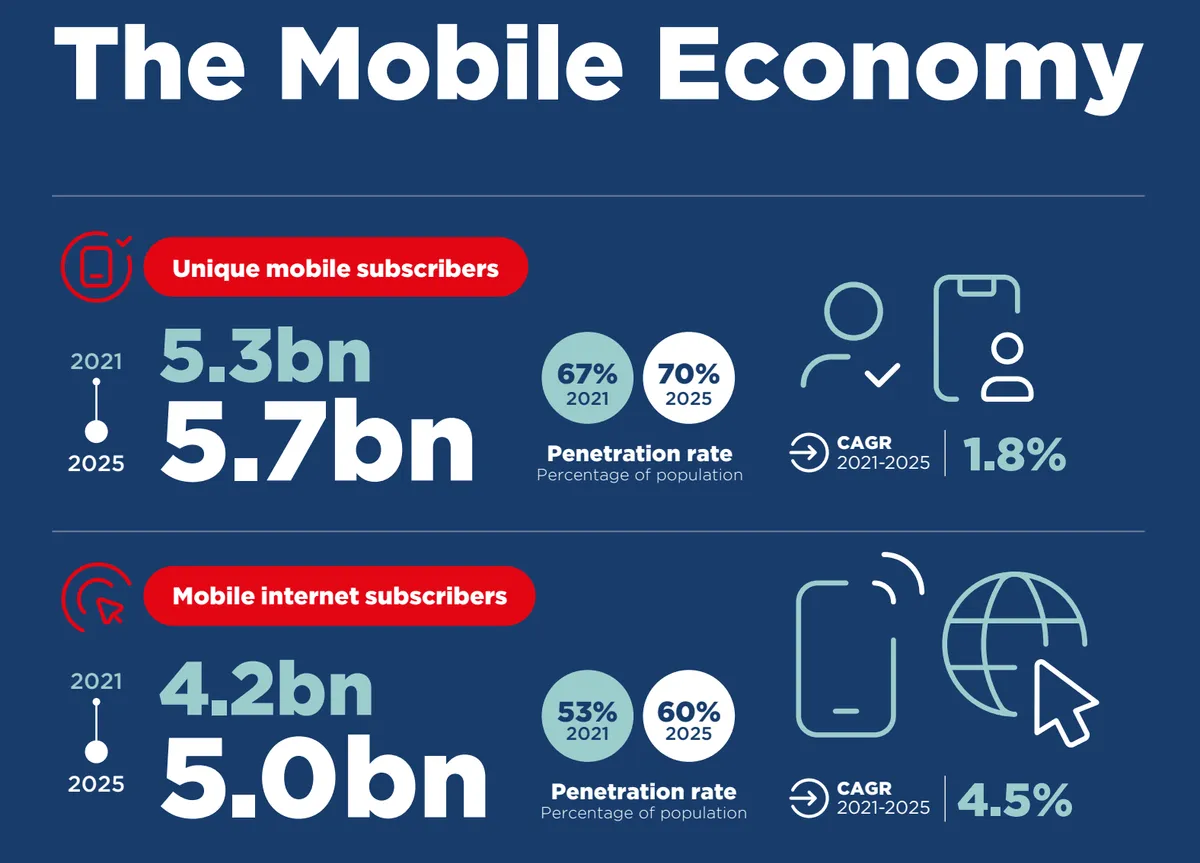
Source: GSMA
Run a SWOT analysis to examine your strengths, weaknesses, opportunities, and threats. This analysis provides insights into what the business does well, where it can improve, and what external factors could impact its success.
#4. Choose the right digital channels
Want your audience to interact with your digital campaigns? You need to go where they roam.
Select the most appropriate digital channels based on your audience's preferences and goals. Some viable options include- social media platforms, search engines, email marketing, video marketing, and podcasts.
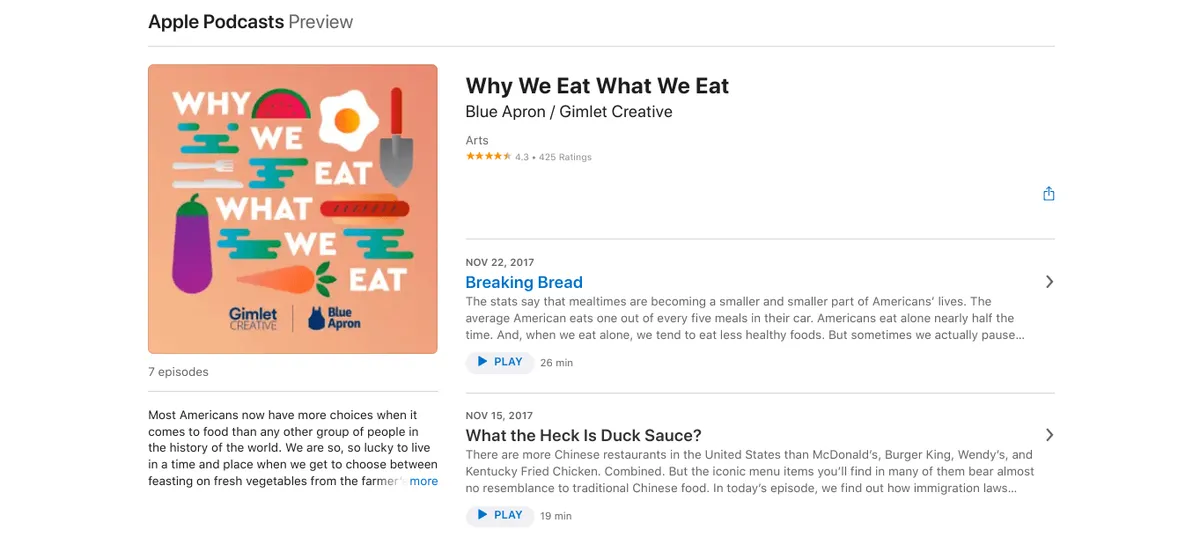
For example, Blue Apron, a meal delivery service, runs a podcast called “Why We Eat What We Eat” for digital marketing. The episodes cover food trends and cultural and social origins of eating habits.
Run competitor analysis to see which channels perform well for your rival brands. The right marketing channel for you also depends on your industry. For example, LinkedIn and Twitter are suitable platforms for B2B companies. However, for B2C brands, platforms like Instagram, Facebook, and TikTok are better.
Holger Sindbaek, who runs Online Solitaire, says, “When we launched our site, we experimented with various digital channels to see what would stick. But the data was clear: search volume for solitaire-related keywords was incredibly high. So, we decided to put our eggs in the SEO basket—optimizing our site, crafting keyword-rich content, and building a robust backlink strategy. The outcome? An upward growth trend since the launch. Even more telling, 90% of our users now come from organic search alone.”
The takeaway is straightforward: Let data guide your channel choices, and don't be afraid to focus intensely where you see real traction.
#5. Craft engaging and relevant content
High-quality, customer-focused material is vital for digital marketing success. This isn't just about written content; video content is equally crucial for engaging your audience and dynamically demonstrating your expertise.
List specific customer challenges and brainstorm topics that address them. Identify trends and implement them in your strategy. Use a content calendar to organize your efforts. It ensures consistency and lets you plan on-brand content around major events, holidays, or trends in your industry.
Each content piece should clearly define your USPs. They must be well-researched, skimmable, and informative. Diversify your efforts with different formats like how-to blogs, reports, case studies, listicles, etc.
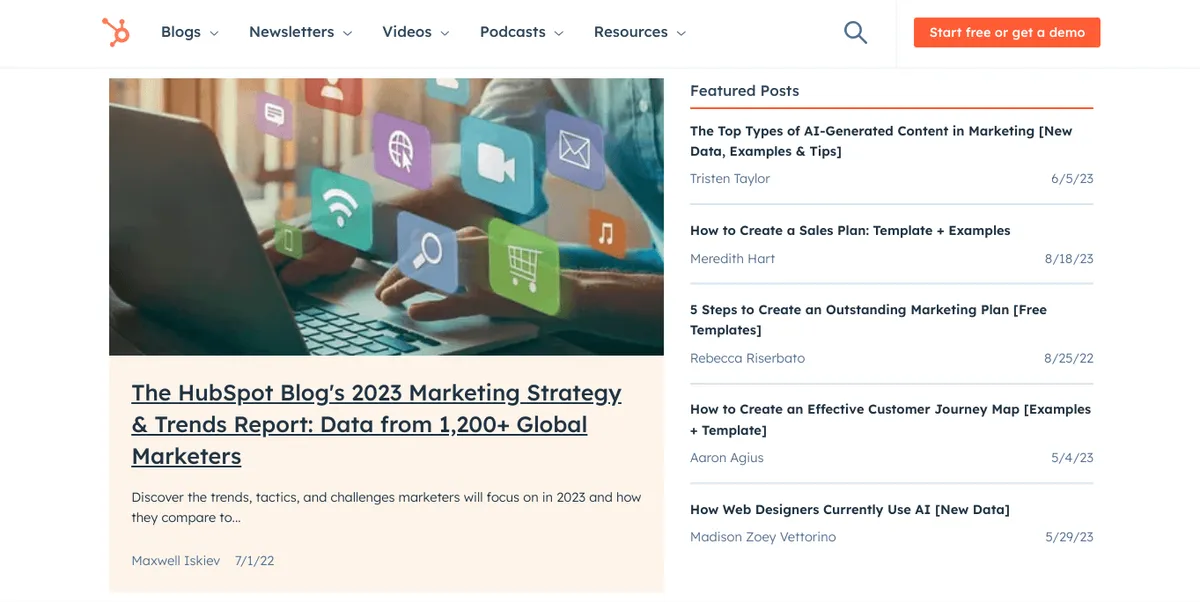
Source: Hubspot
For example, HubSpot heavily relies on high-value content in different formats for its digital marketing strategy.
Use storytelling for more retable content pieces. Add visuals like images, videos, charts, graphs, etc., for more engaging content.
Finally, repurpose UGC and add testimonials to your marketing copies as social proofs. These will build credibility and win your potential customers’ trust.
#6. Implement SEO strategies
Optimize your website and content for search engines to improve your organic visibility. Run keyword research. Place your target keywords strategically in the page title, meta description, headings, and throughout the content. Some additional steps to take for better SEO ranking include:
Improve website speed
Enhance user experience
Include powerful CTAs
Use descriptive and SEO-friendly URLs
Optimize images with relevant alt tags for better accessibility and SEO
Create an XML sitemap and submit it to search engines for indexing
Optimize your ‘Google My Business’ profile for local searches
Encourage online reviews and ratings from customers
Track the latest trends to keep up with the changing algorithm
#7. Leverage social media marketing
Social media platforms are the most prominent digital marketing tools because of their massive user base. Engaging campaigns and shareable content have the potential to go viral and reach a larger audience. Make sure you have a content development plan in place.
Here’s how you can use social media for digital marketing:
Create and post content regularly on your social media pages.
Add a compelling bio with links to your website.
Interact with your audience by replying to their comments.
Host live Q&A sessions and post polls to communicate with your followers.
Use industry-relevant hashtags for your posts.
Create campaign-specific hashtags for better discoverability.
Post trendy reels and sneak peeks of new launches, events, and offers.
Find UGC and repost them for authentic digital marketing.
Maintain a cohesive visual style across all social media channels.
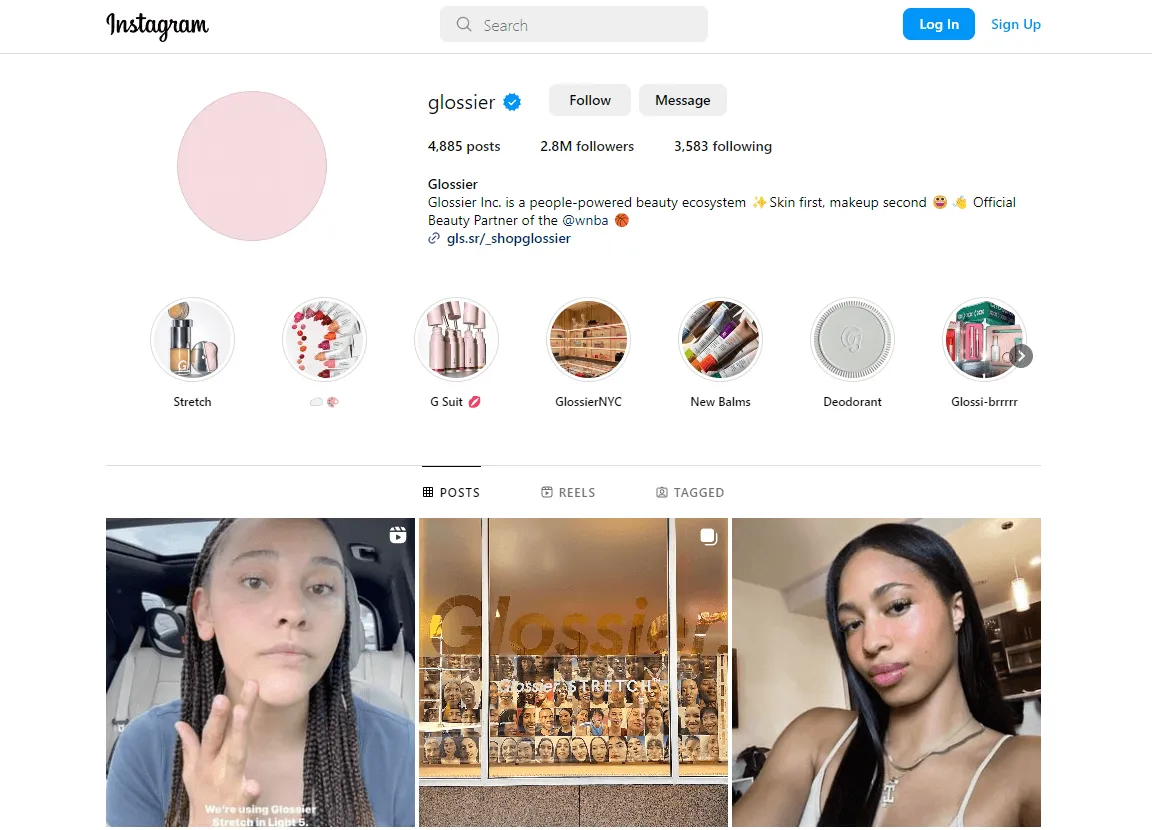
Source: Instagram
For example, the Beauty brand Glossier embraced Instagram for its reach. The profile has a fitting bio with a link to Glossier’s product page. It also has a “View Shop” option for customer convenience. Besides sharing valuable beauty tips, the brand posts user-generated content for an authentic Instagram aesthetic.
#8. Use email marketing for lead generation
Although traditional, emails remain a reliable marketing tool for brands. You can maintain close customer relationships and generate and nurture leads by crafting strategic emails.
Here are some tips for using digital marketing emails properly:
Segment your email list based on customer demographics.
Add a brief and catchy subject line.
Share exclusive offers, voucher codes, and abandoned cart notifications via email.
Start a newsletter to deliver value regularly.
Add lead magnets and CTAs to give the audience a final nudge.
#9. Try paid advertising
Running paid ads avoids the gradual organic growth process and drives instant exposure. Moreover, they are measurable and easier to track.
Here’s how you can leverage paid ads:
Craft attention-grabbing headlines and engaging ad copy with relevant visuals
Align your ad’s content with different landing pages on your website
Add CTAs
Experiment with Google ads and social media ad campaigns
Run A/B testing
Implement conversion tracking to measure the success of your campaigns. It could include tracking sales, sign-ups, downloads, or other actions that indicate success.
#10. Monitor for continuous improvement
Continuous improvements are necessary to sustain your digital marketing success. Regularly monitor your ads’ performance. Monitor metrics like CTR, conversion rate, return on ad spend (ROAS), etc.
You can use tracking tools like Google Analytics to measure website performance and ad ROI.
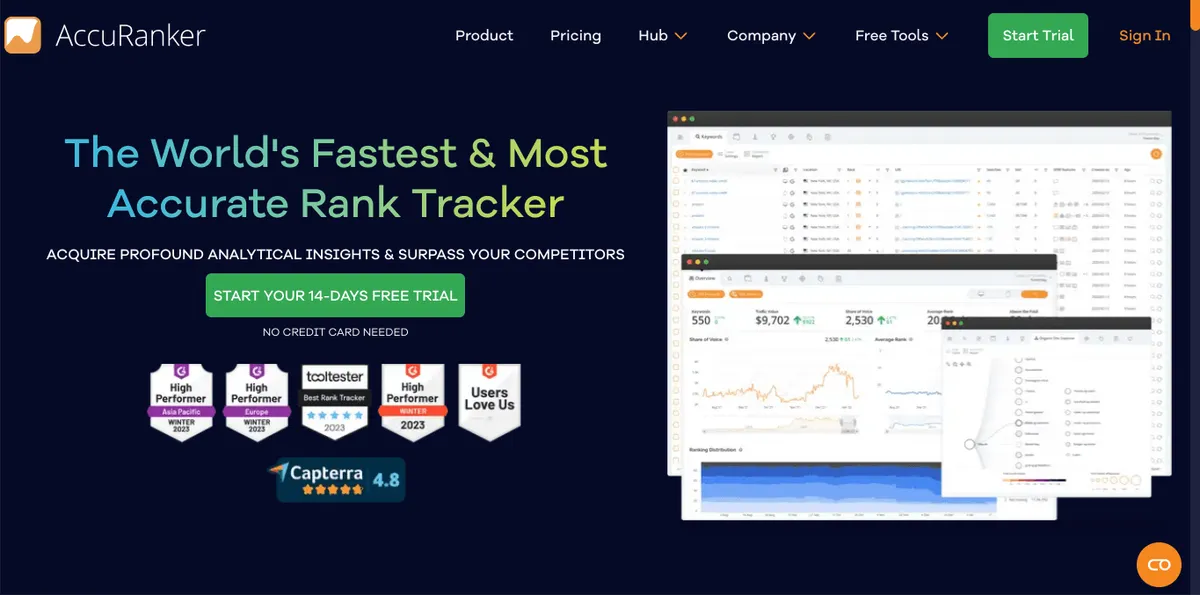
A practical tool is Accuranker, which offers fast KPI monitoring and a 24-billion keyword research library.
Adjust your campaign based on data insights. Pause underperforming ads, allocate more budget to successful ones, tweak ad copy, and adjust targeting.
Conclusion
Digital marketing is essential to build a successful business. It enables better personalization, generates high-quality lead generators, and increases brand awareness.
While we wrap up today’s discussion, we will reiterate some advice:
Build a UVP and track the audience demographic
Run digital audits
Choose the right channel
Scale SEO efforts
Focus more on social media platforms for marketing
Try these strategies and play around until you create a sustainable digital marketing plan.
Related blog posts
The Hidden Flaws in Search Volumes and How to Solve Them
Learn how AI Search Volume delivers reliable search volumes by combining GKP, GSC, and Trends so that you can prioritize the right keywords.
1 July 2025
AI Overviews Are Taking Over SERPs
From traffic drops to decreasing CTRs, AI Overviews are shaking up SEO. Learn what is happening and how AccuRanker helps you track AIO.
25 June 2025
How AccuRanker’s AI Models Fix Inaccurate SEO Data
Struggling with unreliable SEO data? Discover how AccuRanker’s CTR, Search Intent, Search Volume, and Share of Voice deliver accurate insights.
1 June 2025




